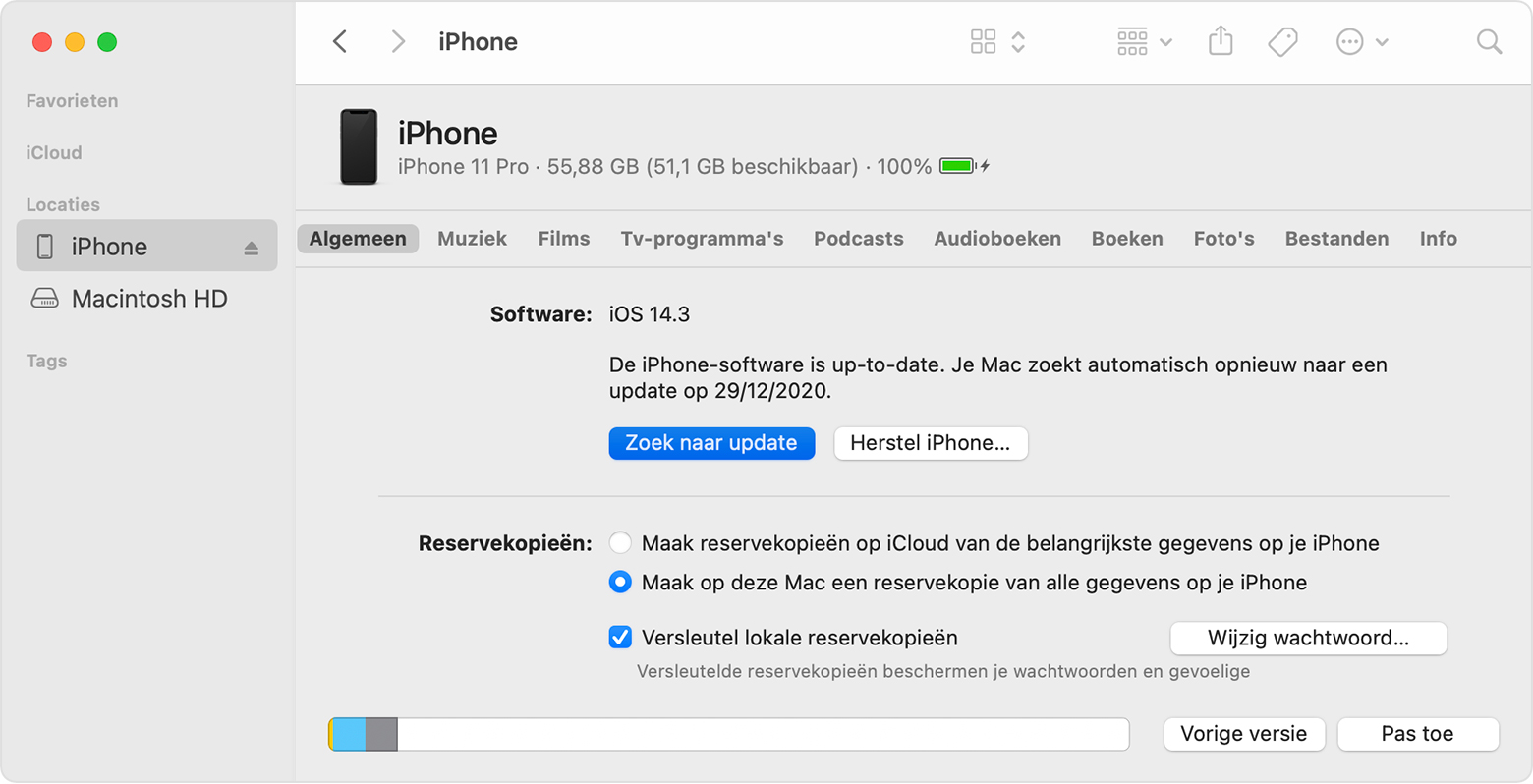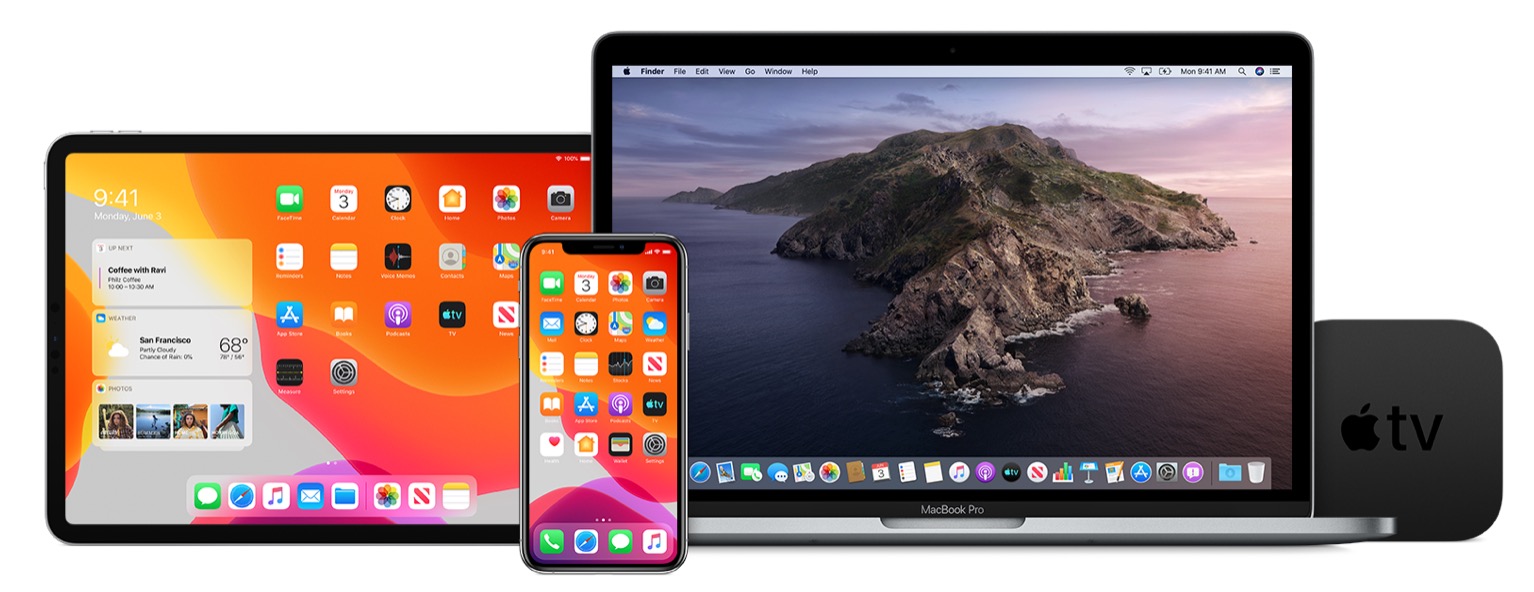Update iOS in Finder or iTunes. You can also update your iPhone via a wired connection with your Mac or Windows PC. On a Mac running macOS 10.15 or later, open Finder. On a Windows PC or Mac running macOS 10.14 or earlier, open iTunes. Connect your iPhone to your computer with a Lightning-to-USB cable. Download the latest version of Apple iOS for Mac - The latest version of Apple's mobile OS. Read 324 user reviews of Apple iOS on MacUpdate. Update to iOS 14 or iPadOS 14. IOS 14 and iPadOS 14 make your iPhone, iPad, and iPod touch even more intelligent, more personal, and more private.
This tip is designed to be a one stop shop to find out what iOS you can use if you are able to install a specific Mac OS X.
Now updated for iOS 13. Including a method to downgrade to iOS 10.3.3, and a method of downgrading to iOS 11.4.
On September 19, 2019, iOS 13 was released. Present requirements for iOS 13 include Mac OS 10.11.6 for iTunes 12.8 as a bare minimum.
Two factor authentication logins for AppleID unlocks was introduced on Mac OS 10.12.4. If your iOS is current for it, you can usually use it to unlock either from another current iOS device, or http://iforgot.apple.com if you don't have a Mac.
On May 29, 2019, it was found that iOS 12.1.5 could sync with iTunes on Mac OS X 10.10.5 if you kept iTunes 12.5.5.
This thread discusses more of the inconsistent requirements that were initially stated:
https://www.imobie.com/support/how-to-downgrade-from-ios-12-to-ios-11.htm offers a means of downgrading from iOS 12 to iOS 11, if no other means work to link an elderly Mac that can't be updated to 10.11. Be very careful to backup your data properly to avoid problems. Consider a lightning port data transfer device if you need to backup data. And remember no backup is complete, unless you know you have two working copies.
Downgrading Mac OS X is possible in many cases, but your iOS is not at all. Downgrading a Mac is described here:http://discussions.apple.com/docs/DOC-1948
iOS 12 & Yosemite -is a new tip I constructed to cover what can be done for those with Yosemite when downgrading the iOS is no longer possible.

For iOS earlier than 5, see this tip:Which OS do I have and where should I post?So be sure to look this over before upgrading your iOS and backup/sync your iOS with your Mac:
Mac OS X 10.5.8 (Leopard) supports PowerPC Macs, iTunes 10.6.3, iOS 5.1.1.Mac OS X 10.6.8 (Snow Leopard) supports Intel only Macs, but does support PowerPC applications, iTunes 11.4 and iOS 6, and iOS 7.Mac OS X 10.7.3 (Lion) supports iCloud except for iCloud Drive in its current iteration and the new Notes.Mac OS X 10.7.5 (Lion) (link explains the pitfalls of losing PowerPC applications) supports iTunes 12.2.2.25 (available from Software update as of 10/24/2015), iOS 8 and iOS 9.0.Mac OS X 10.8 (Mountain Lion) is required for iTunes 12.3 and iOS 9.2 and iOS 9.2.1(except iCloud Drive, and the new notes). Does not support iOS 10 or iTunes 12.5.1 according to the Wikipedia below.Mac OS X 10.9.5 (Mavericks)one user has said is required for iOS 10 and iTunes 12.5. It is though unable to sync with iOS 11.Mac OS X 10.10 (Yosemite) is required minimum for the new iCloud Drive and iOS 11 (except for Notes, which requires El Capitan). iTunes 12.7.0.166 is needed for iOS 11.iTunes 12.8 is now available for 10.11.6 and later. I have waited for any confirmation of working 10.10.5 systems and it appears the system requirements are in error on the website for linking to iOS 12.
Mac OS X 10.11 (El Capitan) is required for the new Notes on iOS 9, and 10.11.6 for the iPhone XR, XS, and iOS 12 and is compatible with all Mac OS X 10.8 and later compatible Macs. It is available for download only for Macs with 10.6 installed and updated to 10.6.8.
Mac OS 10.12 (Sierra) currently has no special requirements as of September 23, 2017, however is a free path to upgrade from Macs that shipped with Lion, that upgraded to 10.7.5 or later, and then updated to Sierra to be able to synchronize with iOS 12.
iOS 12 was released September 17, 2018. Please make sure to backup your data on your iphone, ipad, or ipod touch and not apply any update until you are certain that iTunes on your Mac or PC can handle it.
Some may find running Windows on their Mac Running Windows on a Mac, and Connecting it to Macor creating a separate partition for a newer Mac OS How to format a drive, or disc for maximum portability?allows one to sync to a newer iOS without losing compatibility of older Mac OS versions.
Stuck in Mavericks, Mac OS X 10.9.5? There is a published way to downgrade your iOS.
Note: this is not for the faint at heart, but sure is better than having to upgrade your Mac OS X prematurely for an App you can't afford upgrading on your Mac.
The last iOS supported for various iDevices is listed on the table called 'Terminal update for' on:https://en.wikipedia.org/wiki/IOS_version_history
And many of the latest iOS versions and iTunes support are on https://en.wikipedia.org/wiki/History_of_iTunes
Notes: Upgrading to 10.7 and above, don't forget Rosetta! and High Sierra upgrading tipoffer two means of getting your Mac up to speed with iTunes 12.8. Use the first tip if running 10.6.8 or earlier to get to 10.11. And use the other tip if running 10.8 or later.
-->This guide describes how to use Pair to Mac to connect Visual Studio 2019to a Mac build host. The same instructions apply to Visual Studio 2017.
Overview
Building native iOS applications requires access to Apple's build tools,which only run on a Mac. Because of this, Visual Studio 2019 must connect toa network-accessible Mac to build Xamarin.iOS applications.
Visual Studio 2019's Pair to Mac feature discovers, connects to,authenticates with, and remembers Mac build hosts so that Windows-basediOS developers can work productively.
Pair to Mac enables the following development workflow:
Developers can write Xamarin.iOS code in Visual Studio 2019.
Visual Studio 2019 opens a network connection to a Mac build host anduses the build tools on that machine to compile and sign the iOS app.
There is no need to run a separate application on the Mac – VisualStudio 2019 invokes Mac builds securely over SSH.
Visual Studio 2019 is notified of changes as soon as they happen. Forexample, when an iOS device is plugged in to the Mac or becomes availableon the network, the iOS Toolbar updates instantly.
Multiple instances of Visual Studio 2019 can connect to the Macsimultaneously.
It's possible to use the Windows command-line to build iOS applications.
Note
Before following the instructions in this guide, complete the following steps:
- On a Windows machine, install Visual Studio 2019
- On a Mac, install Xcode and Visual Studio for Mac
- You must manually open Xcode after installing so that it can add any additional components.
If you would prefer not to install Visual Studio for Mac, Visual Studio 2019can automatically configure the Mac build host with Xamarin.iOS and Mono.You must still install and run Xcode.For more information, see Automatic Mac provisioning.
Enable remote login on the Mac
To set up the Mac build host, first enable remote login:
On the Mac, open System Preferences and go to the Sharing pane.
Check Remote Login in the Service list.
Make sure that it is configured to allow access for All users, orthat your Mac username or group is included in the list of allowedusers.
If prompted, configure the macOS firewall.
If you have set the macOS firewall to block incoming connections, youmay need to allow
mono-sgento receive incoming connections. An alertappears to prompt you if this is the case.If it is on the same network as the Windows machine, the Mac shouldnow be discoverable by Visual Studio 2019. If the Mac is still notdiscoverable, try manually adding a Mac or takea look at the troubleshooting guide.
Connect to the Mac from Visual Studio 2019
Now that remote login is enabled, connect Visual Studio 2019 to the Mac.
In Visual Studio 2019, open an existing iOS project or create a new oneby choosing File > New > Project and then selecting an iOS projecttemplate.
Open the Pair to Mac dialog.
Use the Pair to Mac button iOS toolbar:
Or, select Tools > iOS > Pair to Mac.
The Pair to Mac dialog displays a list of all previously-connectedand currently-available Mac build hosts:
Select a Mac in the list. Click Connect.
Enter your username and password.
The first time you connect to any particular Mac, you areprompted to enter your username and password for that machine:
Tip
When logging in, use your system username rather than full name.
Pair to Mac uses these credentials to create a new SSH connectionto the Mac. If it succeeds, a key is added to the authorized_keysfile on the Mac. Subsequent connections to the same Mac will loginautomatically.
Pair to Mac automatically configures the Mac.
Starting with Visual Studio 2019 version15.6,Visual Studio 2019 installs or updates Mono and Xamarin.iOS on aconnected Mac build host as needed (note that Xcode must still beinstalled manually). See Automatic Macprovisioning for more details.
Look for the connection status icon.
When Visual Studio 2019 is connected to a Mac, that Mac's itemin the Pair to Mac dialog displays an icon indicating thatit is currently connected:
There can be only one connected Mac at a time.
Tip
Right-clicking any Mac in the Pair to Mac list brings up a contextmenu that allows you to Connect..., Forget this Mac, orDisconnect:
If you choose Forget this Mac, your credentials for the selectedMac will be forgotten. To reconnect to that Mac, you will need to re-enteryour username and password.
If you have successfully paired to a Mac build host, you are ready to buildXamarin.iOS apps in Visual Studio 2019. Take a look at theIntroduction to Xamarin.iOS for Visual Studioguide.
If you have not been able to pair a Mac, try manually adding aMac or take a look at the troubleshootingguide.
Manually add a Mac
If you do not see a particular Mac listed in the Pair to Mac dialog,add it manually:

Locate your Mac’s IP address.
Open System Preferences > Sharing > Remote Login on your Mac:
Alternatively, use the command line. In Terminal, issue this command:
Depending on your network configuration, you may need to use aninterface name other than
en0. For example:en1,en2, etc.
In Visual Studio 2019's Pair to Mac dialog, select Add Mac...:
Enter the Mac's IP address and click Add:
Enter your username and password for the Mac:
Tip
When logging in, use your system username rather than full name.
Click Login to connect Visual Studio 2019 to the Mac over SSH and addit to the list of known machines.
Automatic Mac provisioning
Starting with Visual Studio 2019 version 15.6,Pair to Mac automatically provisions a Mac with software necessary forbuilding Xamarin.iOS applications: Mono, Xamarin.iOS (the softwareframework, not the Visual Studio for Mac IDE), and various Xcode-relatedtools (but not Xcode itself).
Important
- Pair to Mac cannot install Xcode; you must manually install it on theMac build host. It is required for Xamarin.iOS development.
- Automatic Mac provisioning requires that remote login isenabled on the Mac, and the Mac must be network-accessible to the Windowsmachine. See Enabling remote login on the Macfor more details.
- Automatic Mac provisioning requires 3GB of free space on the Mac to install Xamarin.iOS.
Pair to Mac performs necessary software installations/updates when VisualStudio 2019 is connecting to theMac.
Mono
Pair to Mac will check to make sure that Mono is installed. If it is notinstalled, Pair to Mac will download and install the latest stable versionof Mono on the Mac.
Progress is indicated by various prompts, as shown by the followingscreenshots (click to zoom):
| Mono | Install Check | Downloading | Installing |
|---|
Xamarin.iOS
Pair to Mac upgrades Xamarin.iOS on the Mac to match the versioninstalled on the Windows machine.
Important
Pair to Mac will not downgrade Xamarin.iOS on the Mac from alpha/betato stable. If you have Visual Studio for Mac installed, set yourrelease channel asfollows:
- If you use Visual Studio 2019, select the Stable updates channel inVisual Studio for Mac.
- If you use Visual Studio 2019 Preview, select the Alpha updateschannel in Visual Studio for Mac.
Progress is indicated by various prompts, as shown by the followingscreenshots (click to zoom):
| Xamarin.iOS | Install Check | Downloading | Installing |
|---|

Xcode tools and license
Pair to Mac will also check to determine whether Xcode has been installedand its license accepted. While Pair to Mac does not install Xcode, itdoes prompt for license acceptance, as shown in the following screenshots(click to zoom):
| Xcode | Install Check | License Acceptance |
|---|
Additionally, Pair to Mac will install or update various packagesdistributed with Xcode. For example:
- MobileDeviceDevelopment.pkg
- XcodeExtensionSupport.pkg
- MobileDevice.pkg
- XcodeSystemResources.pkg
The installation of these packages happens quickly and without a prompt.
Note
These tools are distinct from the Xcode Command Line Tools, whichas of macOS 10.9 areinstalled with Xcode.
Troubleshooting automatic Mac provisioning
If you encounter any trouble using automatic Mac provisioning, take a lookat the Visual Studio 2019 IDE logs, stored in%LOCALAPPDATA%XamarinLogs16.0. These logs may contain error messagesto help you better diagnose the failure or get support.
Build iOS apps from the Windows command-line
Pair to Mac supports building Xamarin.iOS applications from the commandline. For example:

The parameters passed to msbuild in the above example are:
ServerAddress– The IP address of the Mac build host.ServerUser– The username to use when logging in to the Mac build host.Use your system username rather than your full name.ServerPassword– The password to use when logging in to the Mac build host.
Ios Update Mac
Note
Visual Studio 2019 stores msbuild in the following directory:C:Program Files (x86)Microsoft Visual Studio2019<Version>MSBuildCurrentBin
The first time Pair to Mac logs in to a particular Mac build host fromeither Visual Studio 2019 or the command-line, it sets up SSH keys. With thesekeys, future logins will not require a username or password. Newlycreated keys are stored in %LOCALAPPDATA%XamarinMonoTouch.
If the ServerPassword parameter is omitted from a command-line buildinvocation, Pair to Mac attempts to log in to the Mac build hostusing the saved SSH keys.
Summary
This article described how to use Pair to Mac to connect Visual Studio 2019 to aMac build host, enabling Visual Studio 2019 developers to build native iOSapplications with Xamarin.iOS.
Ios Update Mac Download
Next steps
